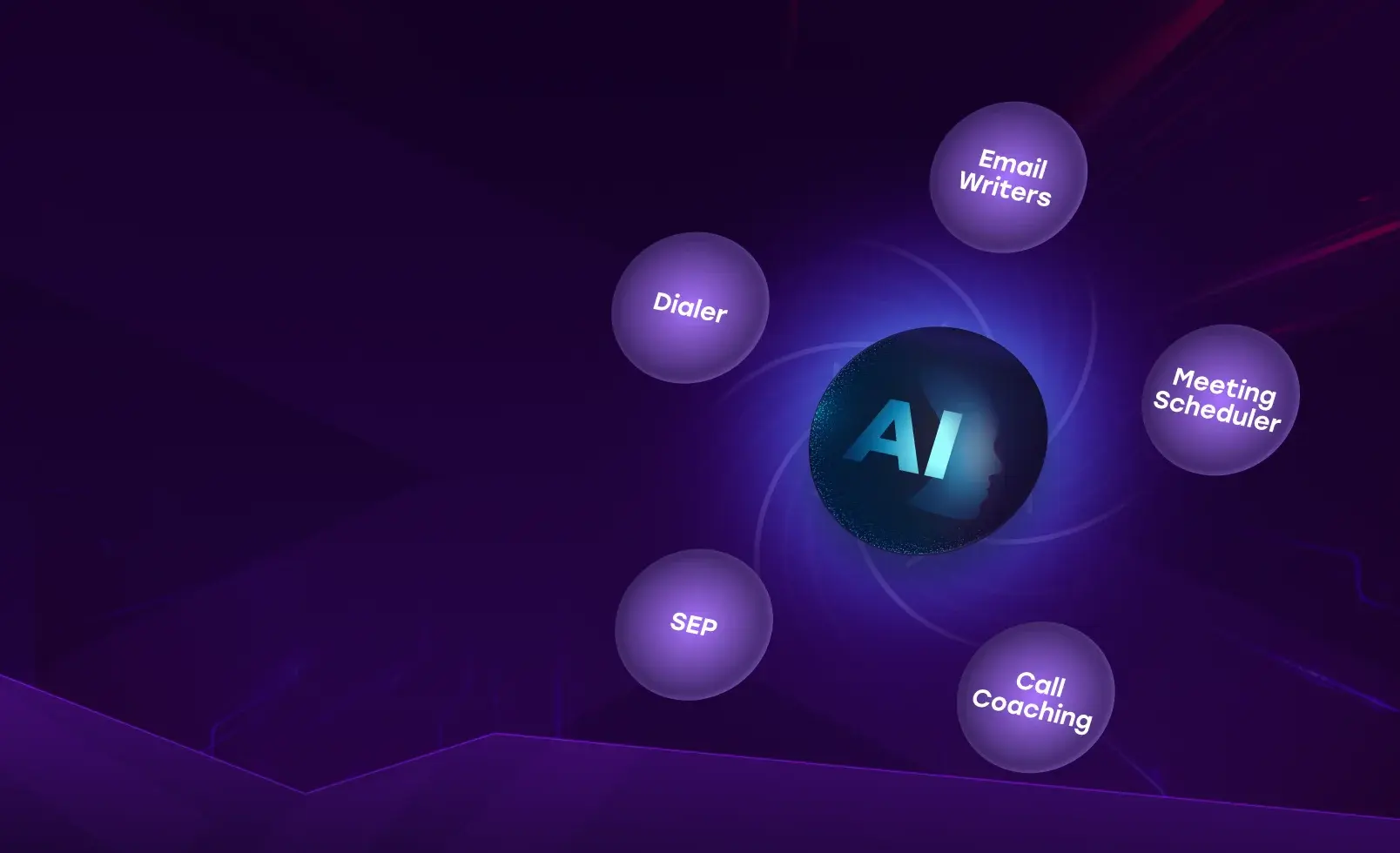Artificial Intelligence (AI) is fundamentally transforming how businesses operate, with AI agents increasingly replacing traditional SaaS solutions across various business functions. This shift isn't just about automation—it's about reimagining entire workflows to improve the results while significantly reducing operational costs.
Talking about Outbound Sales, sales teams have long relied on a complex stack of tools to manage their prospecting and outreach. But AI Sales Development Representative (SDR) tools are changing this landscape by offering a way to simplify the tech stack..
In this blog, we will explore:
- What your sales tech stack looks like today
- The challenges with the current outbound sales tech stack
- How AI SDR solutions streamline your operations
- The tangible benefits of making the switch
Ready to see how AI SDR tools can transform your outbound sales tech stack? Let's get started.
TRADITIONAL OUTBOUND SALES TECH STACK:
Traditional outbound sales tech stack is what you’re using right now. It is a group of software tools that sales teams use to handle different parts of the outbound sales process.
Sales Tech stack is compiled of?
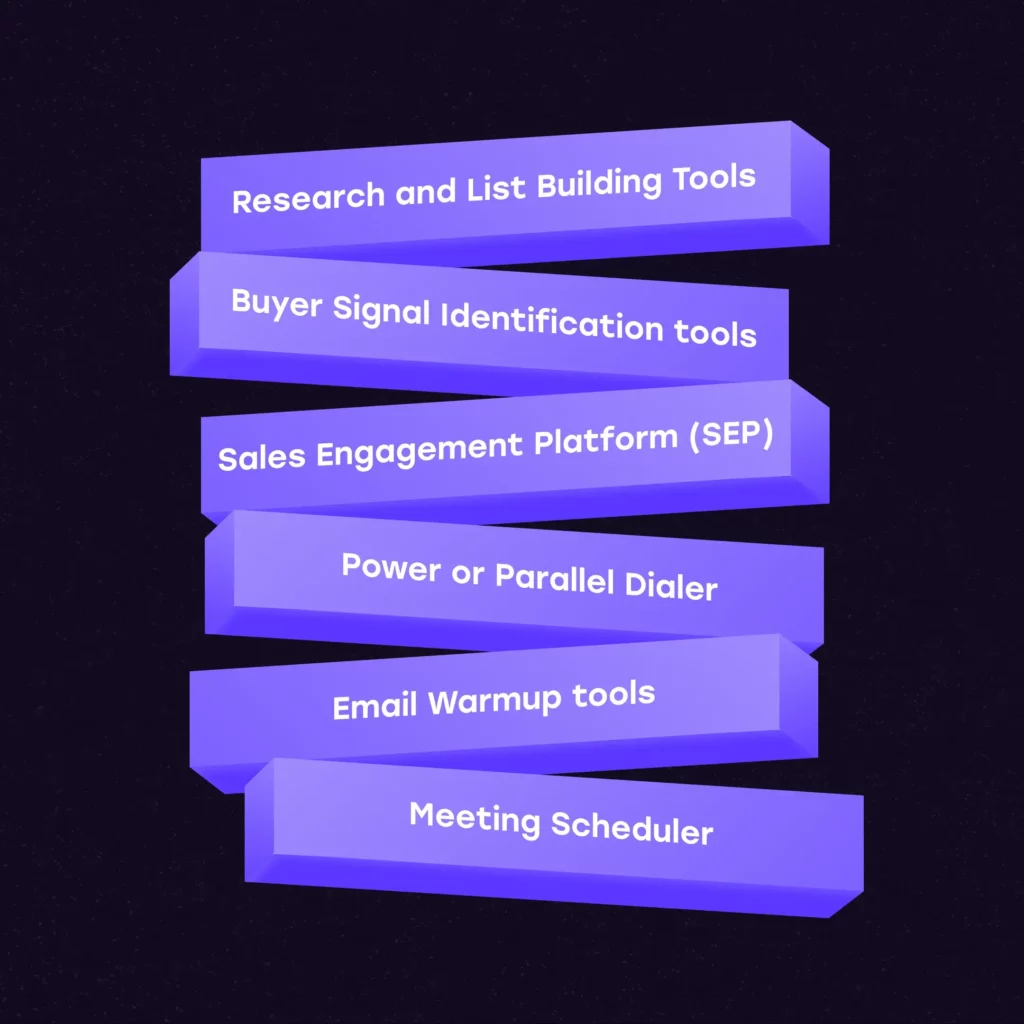
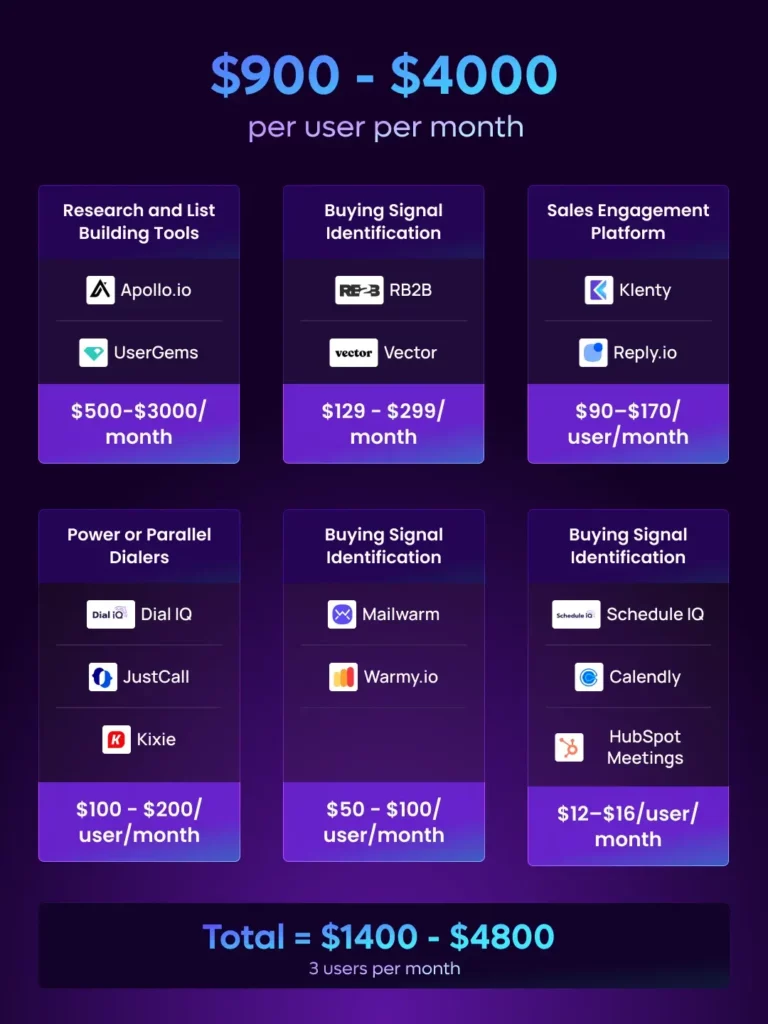
Let's dive into the components of a typical sales tech stack and evaluate the associated expenses.
Components of a Traditional Sales Tech Stack:
1. Research and List Building Tools:
These tools help identify, segment, and enrich lead data to build targeted prospect lists. They use AI, intent signals, and lookalike modeling to prioritize high-potential accounts. Some of the tools in the market include Apollo.io and UserGems.
2. Buying Signal Identification Tools:
These tools monitor potential prospects' behavior such as visiting your website and opening emails to determine whether they are interested in buying your product. Some of the tools in the market are RB2B and Vector.
3. Sales Engagement Platform (SEP):
A SEP automates multi-channel outreach (email, LinkedIn, calls) and manages follow-ups to ensure consistent engagement. Some of the best tools in the market are Klenty and Reply.io.
4. Power or Parallel Dialers:
These dialers automate outbound calling. They enable your SDRs to make more calls in less time by dialing prospects automatically—either one after the other or simultaneously and usually include features like call recording. Some of these dialers in the market are Dial IQ, JustCall, and Kixie.
5. Email Warmup Tools:
These tools gradually improve email deliverability by simulating organic engagement (e.g., automated sends and replies) to ensure that messages reach recipients' inboxes instead of being marked as spam. Some of the tools available are Mailwarm and Warmy.io.
6. Meeting Schedulers:
These tools simplify the process of setting up meetings, reducing the back-and-forth emails between the sales team and the prospect. Some of the tools in the market are Schedule IQ, Calendly, and HubSpot Meetings.

5 CHALLENGES WITH THE EXISTING OUTBOUND SALES TECH STACK:
1. High Costs:
While the tools in a traditional sales tech stack offer undeniable value, the cumulative cost of these platforms can be high.
Say that you're hiring three SDRs—Alex, Jack, and Marie. These 3 SDRs will need multiple tools to execute the various processes involved in outbound sales.
Here's a breakdown of the expenses:
- Research and List Building Tools - $500-$3000/month (emails and phone numbers)
- Buying Signal Identification Tools - $129 - $299/month
- Sales Engagement Platform (SEP) - $90–$170/user/month
- Power or Parallel Dialers - $100 - $200/user/month
- Email Warmup Tools - $50 - $100/user/month
- Meeting Schedulers - $12–$16/user/month
Cost for a traditional sales tech stack would be $800–$3500 per user per month.
So for a team of 3 SDRs, the cost for this tech stack would be around $2500–$10000 per month.
2. STEEP LEARNING CURVE:
Managing multiple tools creates two major challenges for SDR managers. First, there's the training cost - you're not just teaching one tool, but 5-6 different platforms, each with its own workflows and best practices. This means spending 2-3 weeks just on tool training before your SDRs can start meaningful outreach.
Second is the habit-building phase. Even after training, it takes SDRs 4-6 weeks to develop muscle memory for using all these tools effectively in their daily routine. During this period, your new hires are operating at 40-60% capacity, directly impacting your pipeline generation. This extended ramp-up time means you're paying full salaries for reduced output in the crucial first quarter of hiring.
3. MORE ADMIN WORK:
The reality is your SDRs are spending 1-2 hours daily just managing tools instead of having meaningful conversations with prospects. Think about it - they're constantly switching between tabs to update contact info in the CRM, copying data from LinkedIn to your list-building tool, moving conversations from email to your SEP, and manually logging calls in your dialer.
These admin tasks eat into prime calling hours when decision-makers are most likely to answer. Instead of making 60-70 calls during their peak time blocks, SDRs might only manage 40-50 because they're stuck doing data entry.
4. DATA INCONSISTENCY:
When your team is juggling multiple tools, data hygiene becomes a serious issue. SDRs might update a prospect's information in the CRM but forget to update it in the SEP, leading to embarrassing outreach mistakes like sending duplicate emails or calling prospects with outdated information. This not only damages your company's reputation but also wastes time on prospects who've already said no or changed roles.
5. REPORTING NIGHTMARES:
For SDR managers, getting a clear picture of team performance becomes a complex puzzle. You're pulling reports from different tools - dials from your power dialer, email metrics from your SEP, and meeting data from your scheduler. Creating a comprehensive dashboard means manually combining data from 5-6 different sources, which often leads to reporting delays and makes it difficult to make quick, data-driven decisions about your outbound strategy.
HOW AI SDR SIMPLIFIES YOUR OUTBOUND SALES TECH STACK
As AI transforms how businesses operate, sales orgs need to consolidate their prospecting tools. Adding an AI SDR Tool, sales teams can replace many of the point solutions.
Here’s what your outbound sales tech stack could look like with an AI SDR solution.
- AI SDR
- A Power or Parallel Dialer solution
- A Meeting scheduler
Here’s how Klenty’s SDRx automates your prospecting workflow:
- List Building: SDRx can identify your ideal customers based on the data you feed it - your best-fit customers, last few won deals, etc. Once it has an understanding of your Ideal Customer Profile (ICP), it will automatically build a list of best-fit contacts daily who are more likely to respond.
It builds the list by accessing a vast database of 600 million contacts to identify the right contacts. The AI models listen to various intent signals and social signals to give a list of contacts who are more likely to respond.
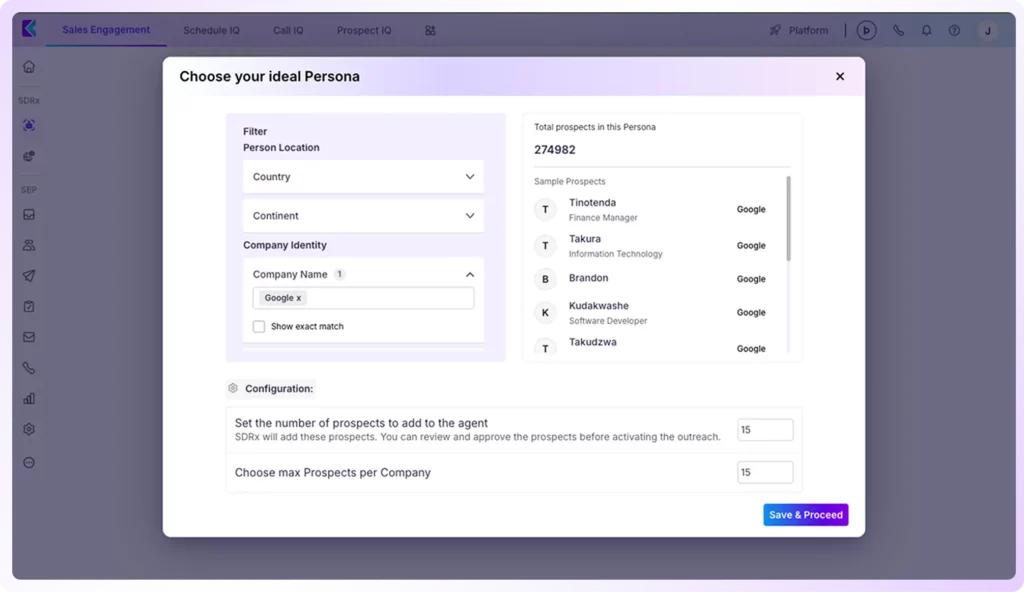
- Account and Prospect Research: SDRx understands both the personal and business needs of your prospect. It analyzes internal data (from your CRM or past conversations) and external sources (like news reports, social media activity, and industry updates) and gets a complete view of what matters most to your target accounts.
It has complete understanding of every prospect’s recent business goals, their company’s latest projects, or even personal motivations and uses this information to ensure that your outreach is always aligned with their needs.
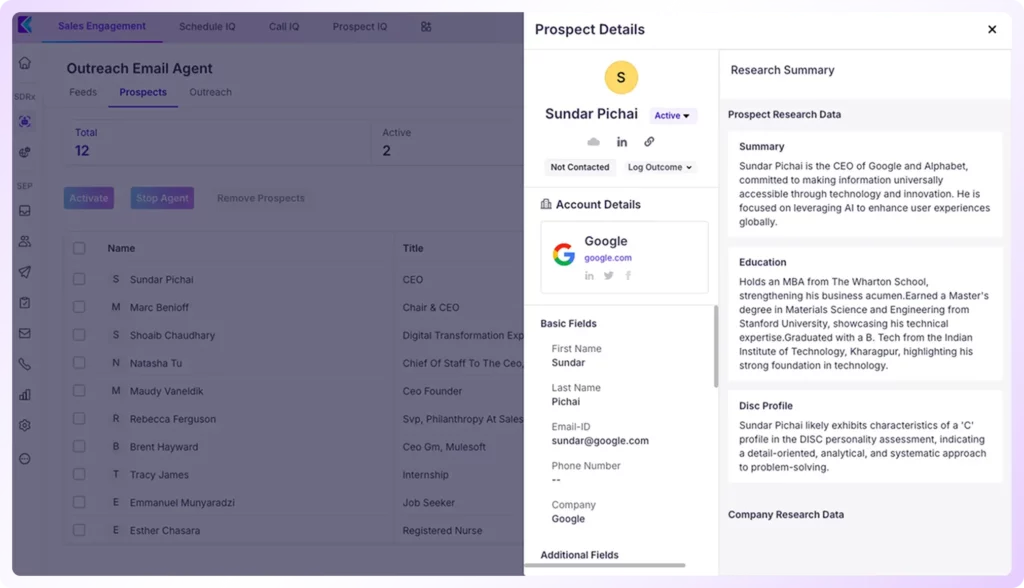
- Personalized email crafting: SDRx understands each prospect deeply and uses 25 proven copywriting frameworks to craft emails that feel personalized and human—or sometimes even better.
It analyzes the prospect’s data and ensures that every email is relevant, engaging, and optimized for response.
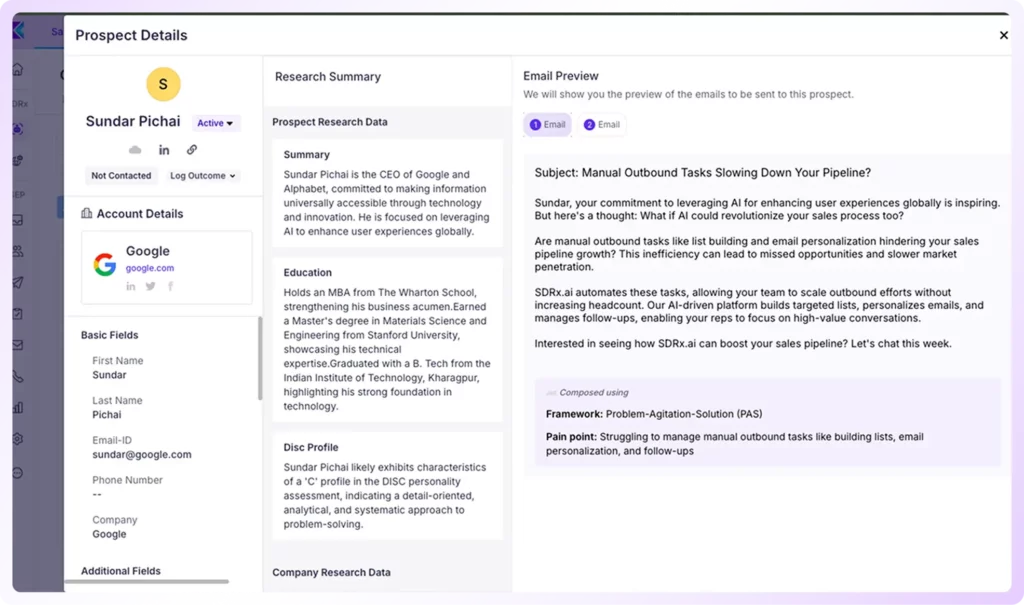
- Follow up management: SDRx removes the stress of managing follow-ups by taking a dynamic approach. Instead of following a rigid cadence, it adapts to each prospect’s buying journey. By tracking how prospects interact with your previous communications, sdrX tailors its outreach to stay relevant and timely, ensuring prospects stay engaged throughout the sales process.
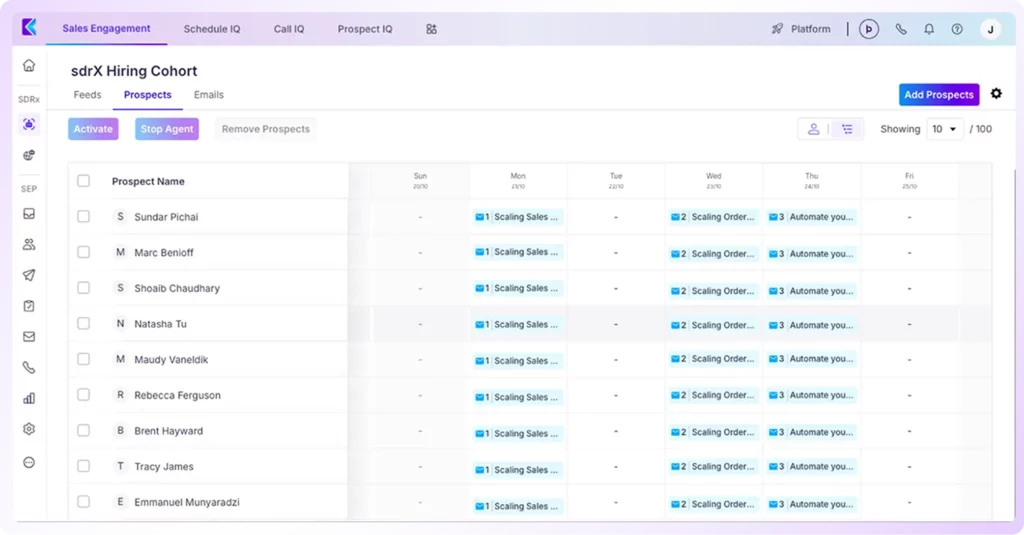
Here’s Dialers Can Improve Calling Volume:
Since most prospecting activities are automated by an AI SDR tool, the only activity sales reps need to focus is - calling interested prospects.
They need to invest in a good dialer solution like Dial IQ that offers all the necessary features to improve call productivity and book more meetings.
Key Features of Dial IQ:
Dial IQ offers different dialer modes for sales reps to accelerate call volume.
- Sales reps with a high volume of calls can use the Parallel Dialer to dial up to 5 prospects at a time and save time.
- Alternatively, for reps who prefer structured call schedules without interruptions, the Power Dialer offers a focused environment dedicated solely to their calls.
- For reps using a multi-channel strategy and making warm calls, 1 Click-to-Call Dialer is helpful as it provides prospect information from the CRM or cold calling software before each call, facilitating personalized conversations and boosting conversion rates.
And that’s not all. Here are some other useful features:
- Local Numbers and Automatic number rotation
- Voicemail Drop to send personalized, pre-recorded voicemails with 1 click.
- Integrates with 4 CRMs: Salesforce, HubSpot, Zoho, and Pipedrive. Effortlessly sync all your CRM's calling activities, notes, transcripts, and tasks.
Benefits of adding an AI SDR to your sales tech stack:
1. Reduced Technology Cost:
When AI SDR comes in, here’s how the costs break down:
- SDRx: $500 (for approx 1,000 prospects)
- Power or Parallel Dialer: $50–$100/user/month
- Meeting scheduler: $12–$16/user/month
| Cost for this AI SDR infused tech stack would be: $560–$620/ user/ month |
2. Improved Booked Meetings :
With AI SDRs integrated into the outbound sales tech stack, the cost spent on tools is significantly reduced, as AI SDRs cost far less than all those tools combined. As the hectic tasks are automated by them, human SDRs can focus solely on calls, leading to an increase in meetings booked. Ultimately, AI SDRs assist human SDRs and not replace them.
3. Reduced Ramp up time:
When AI SDRs are integrated, ramp-up times are significantly reduced. Since AI SDRs handle routine tasks and consolidate workflows into a single, simple system, there is no need to spend weeks training new hires on multiple platforms or waiting for them to get comfortable.
Human SDRs no longer need to learn a list-building tool, a research tool, and other complex software. Instead, they can focus on mastering just one or two key tools like dialers, allowing them to start reaching out to prospects much sooner via calling.
4. Less Operational Work:
With AI SDRs, operational work is greatly reduced as AI agents automate routine tasks such as data entry and follow-up scheduling. SDRs can reclaim valuable hours each day—time once spent on administrative work—and direct it toward dialing prospects.
Instead of making 40 to 50 distracted calls, they can have 70 to 80 focused conversations during prime hours. As a result, prospects get faster, more personalized outreach, and your team starts closing more deals.
Conclusion:
In 2025, implementing an AI SDR platform alongside your human SDRs isn't just an option - it's a competitive necessity.
While AI handles the data-intensive tasks of finding and engaging prospects, SDRs can focus their expertise on high-value conversations to build relationships and book meetings.
This combination of human expertise and Artificial intelligence delivers cost savings, improves productivity, boosts engagement rates, and helps your team generate a stronger sales pipeline.

